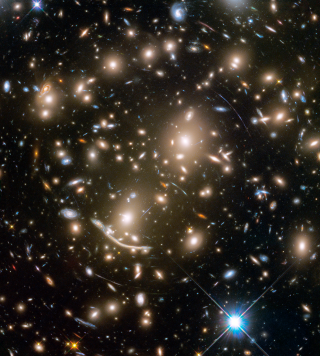Bibcode
Méndez-Abreu, J.; Ruiz-Lara, T.; Sánchez-Menguiano, L.; de Lorenzo-Cáceres, A.; Costantin, L.; Catalán-Torrecilla, C.; Florido, E.; Aguerri, J. A. L.; Bland-Hawthorn, J.; Corsini, E. M.; Dettmar, R. J.; Galbany, L.; García-Benito, R.; Marino, R. A.; Márquez, I.; Ortega-Minakata, R. A.; Papaderos, P.; Sánchez, S. F.; Sánchez-Blazquez, P.; Spekkens, K.; van de Ven, G.; Wild, V.; Ziegler, B.
Referencia bibliográfica
Astronomy and Astrophysics, Volume 598, id.A32, 18 pp.
Fecha de publicación:
1
2017
Revista
Número de citas
121
Número de citas referidas
114
Descripción
We present a two-dimensional multi-component photometric decomposition
of 404 galaxies from the Calar Alto Legacy Integral Field Area data
release 3 (CALIFA-DR3). They represent all possible galaxies with no
clear signs of interaction and not strongly inclined in the final CALIFA
data release. Galaxies are modelled in the g, r, and i Sloan Digital Sky
Survey (SDSS) images including, when appropriate, a nuclear point
source, bulge, bar, and an exponential or broken disc component. We use
a human-supervised approach to determine the optimal number of
structures to be included in the fit. The dataset, including the
photometric parameters of the CALIFA sample, is released together with
statistical errors and a visual analysis of the quality of each fit. The
analysis of the photometric components reveals a clear segregation of
the structural composition of galaxies with stellar mass. At high masses
(log (M⋆/M⊙) > 11), the galaxy
population is dominated by galaxies modelled with a single Sérsic
or a bulge+disc with a bulge-to-total (B/T) luminosity ratio B/T >
0.2. At intermediate masses (9.5 < log
(M⋆/M⊙) < 11), galaxies described with
bulge+disc but B/T < 0.2 are preponderant, whereas, at the low mass
end (log (M⋆/M⊙) < 9.5), the
prevailing population is constituted by galaxies modelled with either
purediscs or nuclear point sources+discs (i.e., no discernible bulge).
We obtain that 57% of the volume corrected sample of disc galaxies in
the CALIFA sample host a bar. This bar fraction shows a significant drop
with increasing galaxy mass in the range 9.5 < log
(M⋆/M⊙) < 11.5. The analyses of the
extended multi-component radial profile result in a volume-corrected
distribution of 62%, 28%, and 10% for the so-called Type I (pure
exponential), Type II (down-bending), and Type III (up-bending) disc
profiles, respectively. These fractions are in discordance with previous
findings. We argue that the different methodologies used to detect the
breaks are the main cause for these differences.
The catalog of fitted parameters is only available at the CDS via
anonymous ftp to http://cdsarc.u-strasbg.fr (http://130.79.128.5) or via http://cdsarc.u-strasbg.fr/viz-bin/qcat?J/A+A/598/A32
Proyectos relacionados

Evolución de Galaxias en Cúmulos
Las estructuras en el Universo, a todas las escalas de masa, se han formado de una forma jerárquica y principalmente producidas por fusiones de galaxias. Sin embargo, esta formación jerárquica de las galaxias está modulada por el entorno en el cual se crean y evolucionan. Mientras que las galaxias de campo presentan una evolución pasiva, los
Jairo
Méndez Abreu

Evolución Galáctica en el Grupo Local
La formación y evolución de galaxias es un problema fundamental en Astrofísica. Su estudio requiere “viajar atrás en el tiempo”, para lo cual hay dos enfoques complementarios. El mas extendido consiste en analizar las propiedades de las galaxias a diferentes distancias cosmológicas. Nuestro equipo se concentra en el otro enfoque, denominado
Emma
Fernández Alvar

Huellas de la Formación de las Galaxias: Poblaciones estelares, Dinámica y Morfología
Bienvenida a la página web del g rupo de investigación Traces of Galaxy Formation. Somos un grupo de investigación amplio, diverso y muy activo cuyo objetivo principal es entender la formación de galaxias en el Universo de una manera lo más completa posible. Con el estudio detellado de las poblaciones estelares como bandera, estamos constantemente
Anna
Ferré Mateu